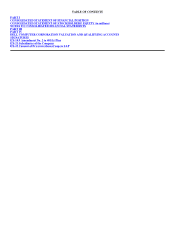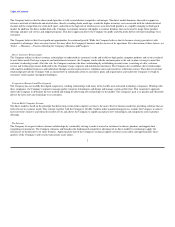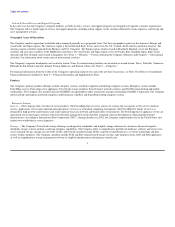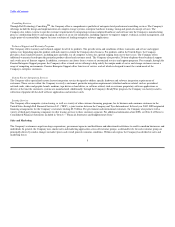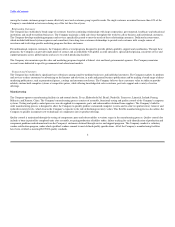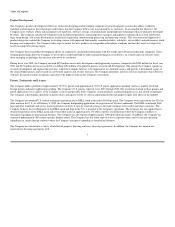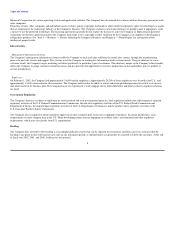Dell 2001 Annual Report Download - page 13
Download and view the complete annual report
Please find page 13 of the 2001 Dell annual report below. You can navigate through the pages in the report by either clicking on the pages listed below, or by using the keyword search tool below to find specific information within the annual report.
Table of Contents
European sales are often weaker in the third quarter and consumer sales are often stronger in the fourth quarter. Historically, the net result of seasonal trends
has not been material relative to the Company's overall results of operations, but many of the factors that create and affect seasonal trends are beyond the
Company's control.
Technological Changes and Product Transitions
The technology industry is characterized by continuing improvements in technology, which results in the frequent introduction of new products, short product
life cycles and continual improvement in product price/performance characteristics. While the Company believes that its direct model and asset management
practices afford it an inherent competitive advantage over some of its competitors, product transitions present some of the greatest executional challenges and
risks for any computer systems company. A failure on the part of the Company to effectively manage a product transition will directly affect the demand for
the Company's products and the profitability of the Company's operations. In addition, while the Company has meaningful relationships with some of the
world's most advanced technology companies, continuing technological advancement, which is a significant driver of customer demand, is largely beyond the
control of the Company.
Inventory Management/Supplies
The Company's direct business model gives it the ability to operate with reduced levels of component and finished goods inventories. The Company's
financial success in recent periods has been due in part to its asset management practices, including its ability to achieve rapid inventory turns. However,
temporary disruptions in component availability can unfavorably affect the Company's short-term performance. Supply conditions have generally been
favorable both to the Company and to the industry in recent years. However, less favorable supply conditions, as well as other factors, may require or result in
increased inventory levels in the future.
The Company's manufacturing process requires a high volume of quality components that are procured from third party suppliers. Reliance on suppliers, as
well as industry supply conditions, generally involves several risks, including the possibility of defective parts (which can adversely affect the reliability and
reputation of the Company's products), a shortage of components and reduced control over delivery schedules (which can adversely affect the Company's
manufacturing efficiencies) and increases in component costs (which can adversely affect the Company's profitability).
The Company has several single-sourced supplier relationships, either because alternative sources are not available or the relationship is advantageous due to
performance, quality, support, delivery, capacity or price considerations. If these sources are unable to provide timely and reliable supply, the Company could
experience manufacturing interruptions, delays or inefficiencies, adversely affecting its results of operations. Even where alternative sources of supply are
available, qualification of the alternative suppliers and establishment of reliable supplies could result in delays and a possible loss of sales, which could affect
operating results adversely.
Risk on Financial Instruments
The Company regularly utilizes derivative instruments to hedge its exposure to fluctuations in foreign currency exchange rates and interest rates. In addition,
the Company utilizes equity instrument contracts to execute repurchases of its common stock under its Board-authorized share repurchase program. Some of
these instruments and contracts may involve elements of market and credit risk in excess of the amounts recognized in the Consolidated Financial Statements.
For additional information about risk on financial instruments, see "Item 7 — Management's Discussion and Analysis of Financial Condition and Results of
Operations — Market Risk."
10


